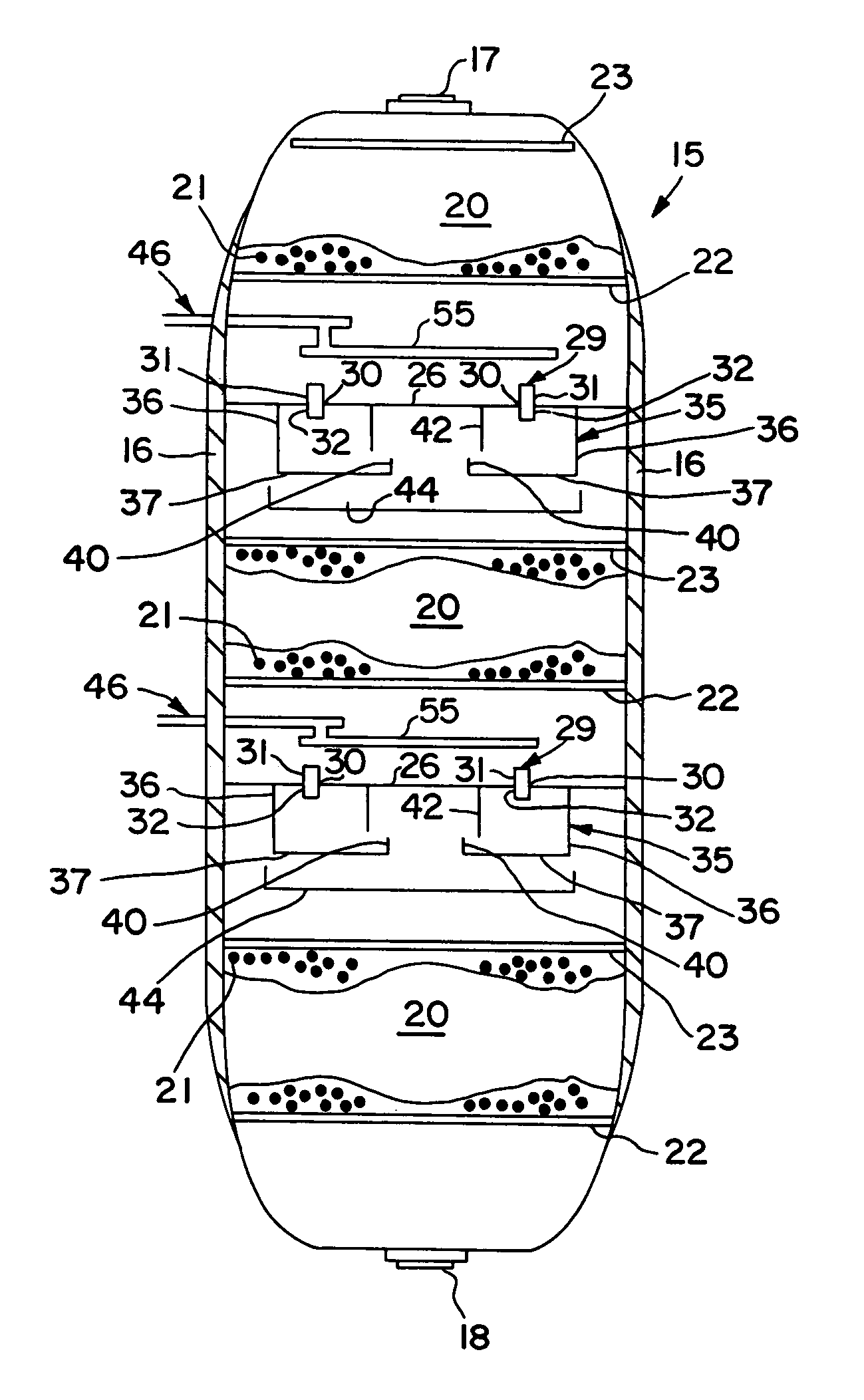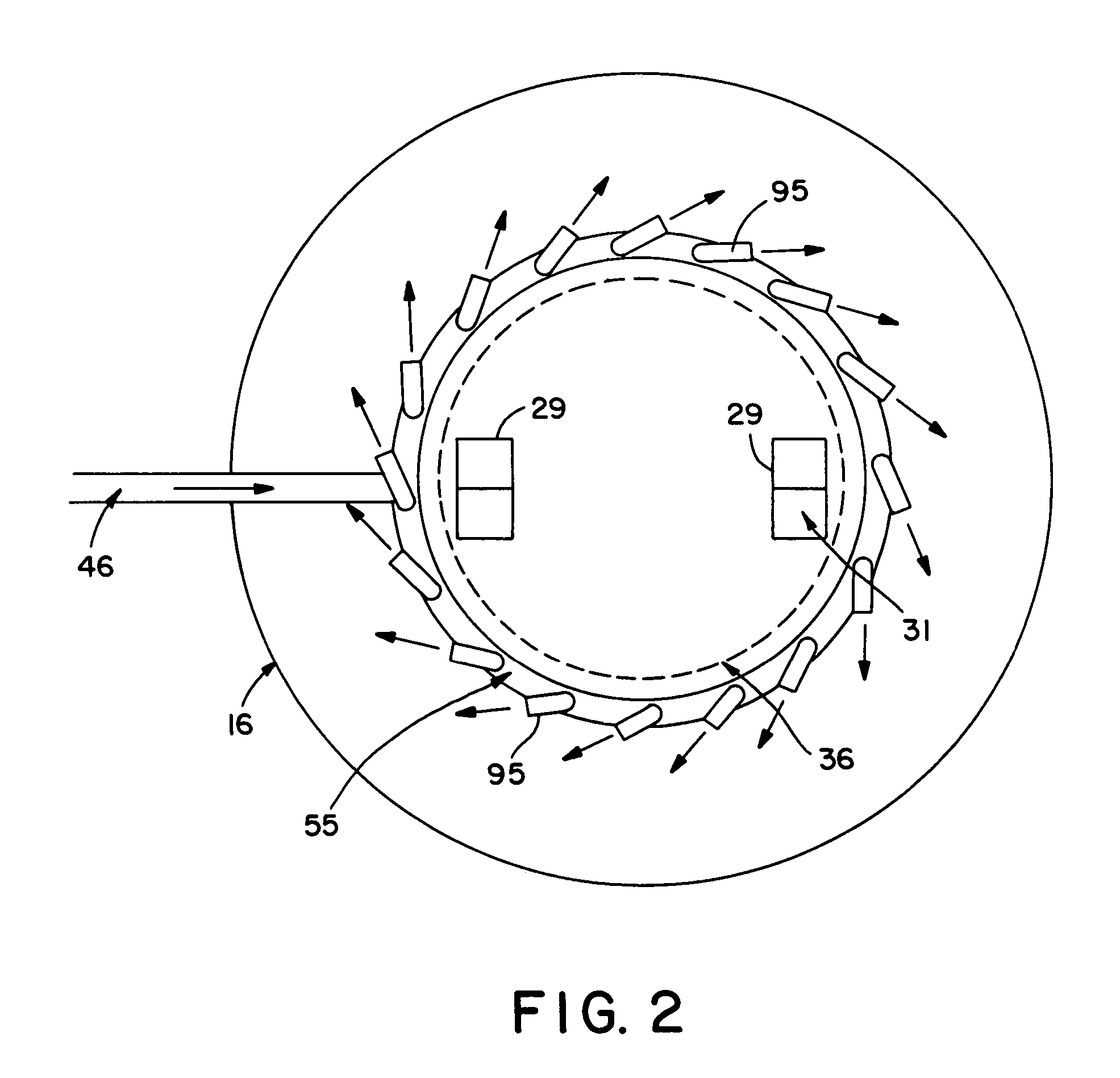Multiphase mixing device with improved quench injection for inducing rotational flow
a multi-phase mixing and rotational flow technology, applied in chemical/physical/physical-chemical processes, chemical apparatus and processes, physical/chemical process catalysts, etc., can solve the problems of poor performance, increased inlet temperature differences following the quench zone, and failure of the quench zone to erase the lateral temperature differences at the outlet of the preceding bed, etc., to achieve significant improvement in the mixing of quench fluid and improve the effect of quench injection
- Summary
- Abstract
- Description
- Claims
- Application Information
AI Technical Summary
Benefits of technology
Problems solved by technology
Method used
Image
Examples
Embodiment Construction
[0027]FIG. 1 shows, in simplified form, a hydroprocessing reactor column in accordance with the present invention. The general configuration of the reactor is conventional, as are details such as the supports for the grids and distributor plates which are not shown for purposes of clarity. The reactor column 15 is formed as a generally cylindrical chamber having an outer wall 16. A reactor inlet 17 and a reactor outlet 18 are provided for introducing and discharging fluids from the reactor column 15. The reactor column 15 further comprises one or more catalyst beds 20 positioned along the longitudinal axis of the reactor column 15. Each of the catalyst beds 20 contains catalyst material 21 which is preferably supported below by a catalyst support grid 22. The catalyst support grid 22, together with the outer wall 16, provides direct support for the catalyst material 21. Alternatively, the catalyst support grid 22 may provide indirect support for the catalyst 21 by retaining one or m...
PUM
| Property | Measurement | Unit |
|---|---|---|
| angle | aaaaa | aaaaa |
| angles | aaaaa | aaaaa |
| angle | aaaaa | aaaaa |
Abstract
Description
Claims
Application Information
 Login to View More
Login to View More - R&D
- Intellectual Property
- Life Sciences
- Materials
- Tech Scout
- Unparalleled Data Quality
- Higher Quality Content
- 60% Fewer Hallucinations
Browse by: Latest US Patents, China's latest patents, Technical Efficacy Thesaurus, Application Domain, Technology Topic, Popular Technical Reports.
© 2025 PatSnap. All rights reserved.Legal|Privacy policy|Modern Slavery Act Transparency Statement|Sitemap|About US| Contact US: help@patsnap.com



